Born from the humble F-5 Freedom Fighter and rebranded with a predator’s grin, Northrop’s F-20 Tigershark promised front-line punch without front-line price. It was intended to be an export-ready hot rod that could launch in a minute, climb like a homesick angel, and undercut the F-16 on cost and complexity.
Backed by Chuck Yeager and packed with a modern radar, HOTAS cockpit, and a snarling F404 engine good for Mach 2, it looked like the perfect “have-it-all” fighter for America’s allies. Yet geopolitics, shifting policies, and bad timing turned this thoroughbred into an orphan, its brilliance dimmed not by design flaws but by circumstance. This is the story of the Tigershark: how a private-venture contender went talon-to-talon with giants — and why one of the best jets that never was faded from the sky.
Origin Story: F-5 Freedom Fighter
The predecessor to the F-20 was the Northrop F-5 Freedom Fighter.
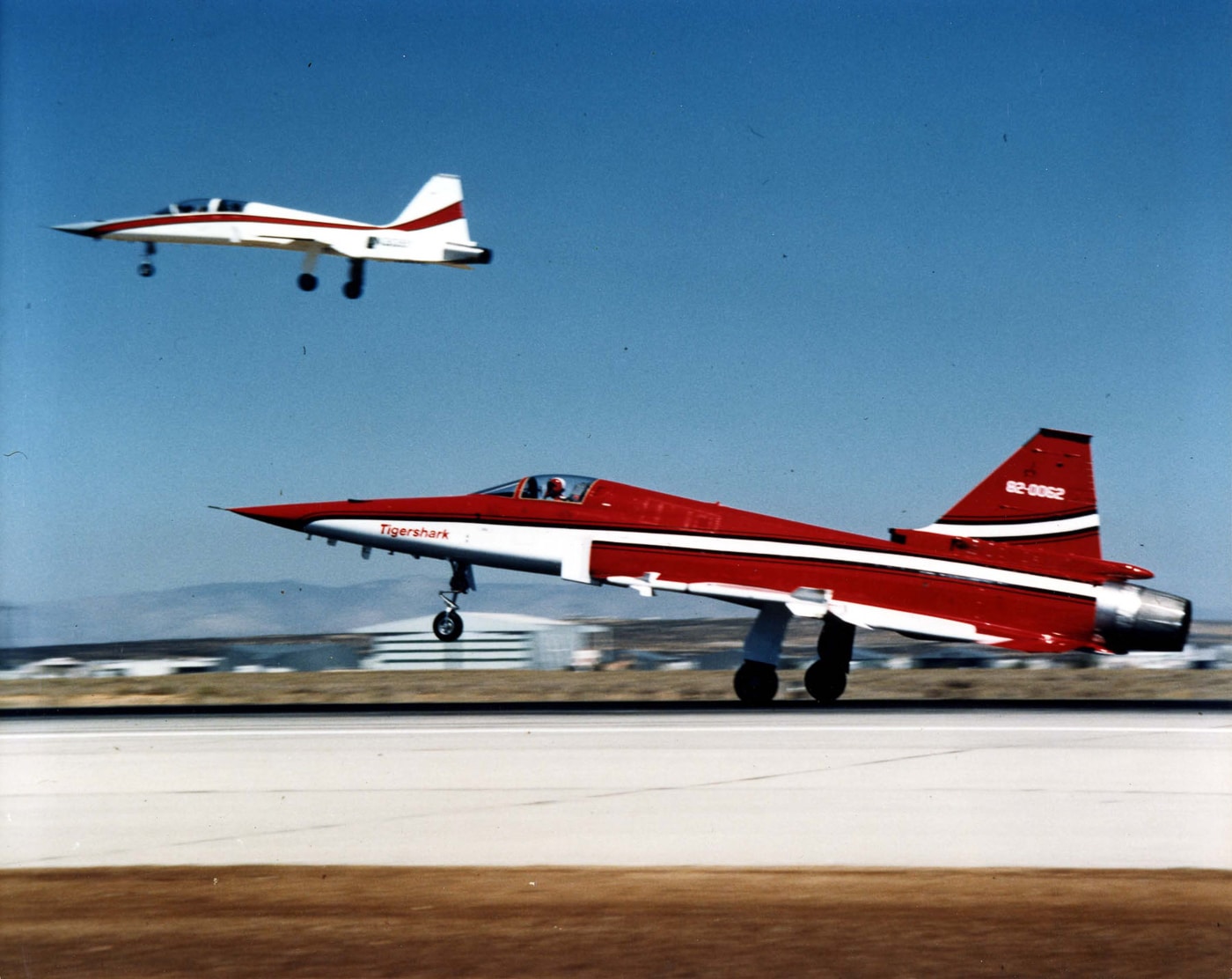
The F-5, which was created at the behest of President Kennedy, who instructed the Department of Defense to find a contractor that could design an inexpensive fighter that could be sold to U.S. Allies through the Mutual Defense Assistance Act. Several other aircraft were also in the running, including base versions of the Lockheed F-104 Starfighter jet and the Vought F-8 Crusader.
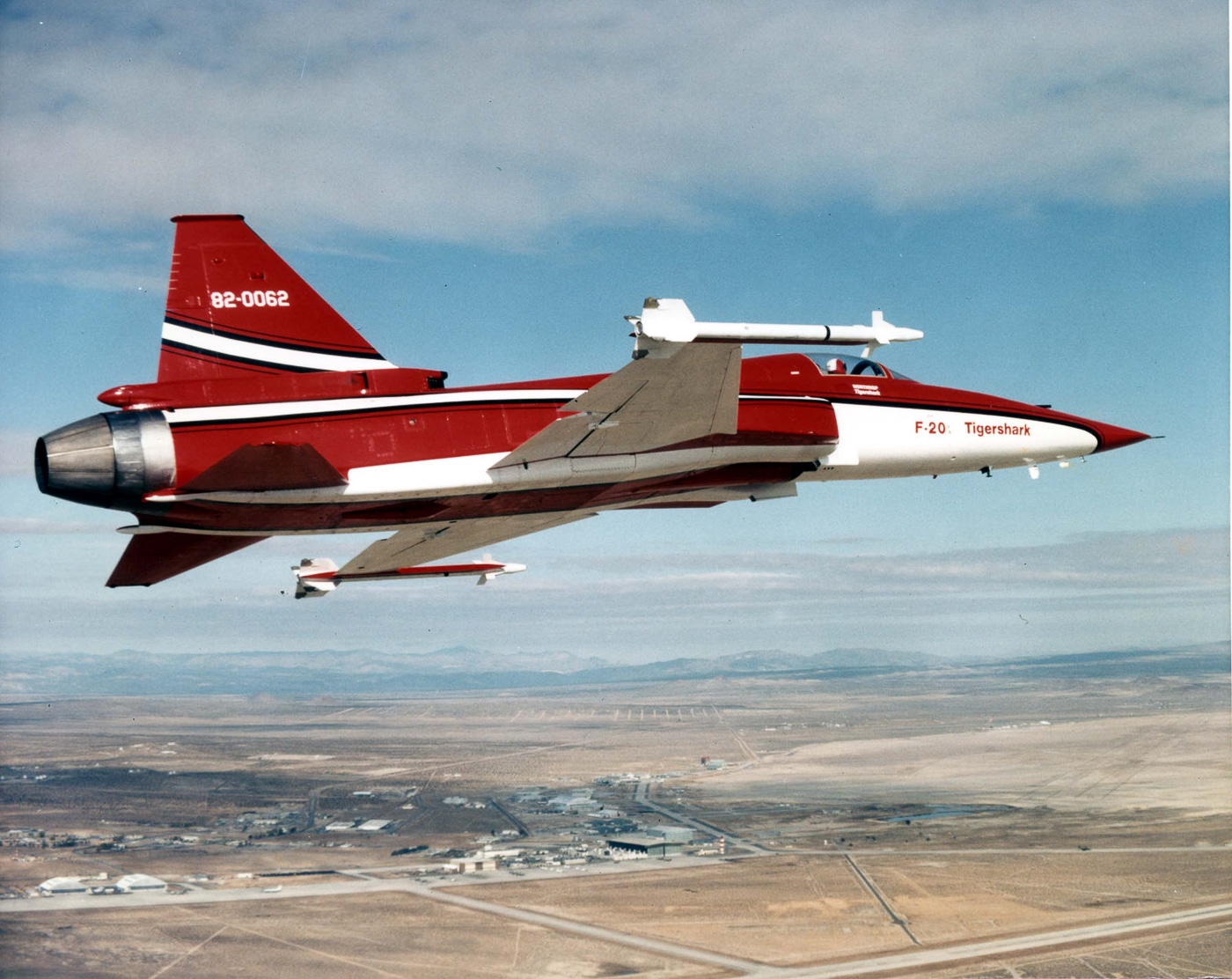
More than 800 F-5s were produced for allied military forces from the early 60s to the early 70s. In 1972, Northrop created the F-5E/F Tiger II, which featured more powerful engines, AN/APQ-153 radar, and wingtip rails for launching AIM-9 Sidewinder air-to-air missiles. Over 1,400 Tiger IIs were built.
Development of the F-20 Tigershark
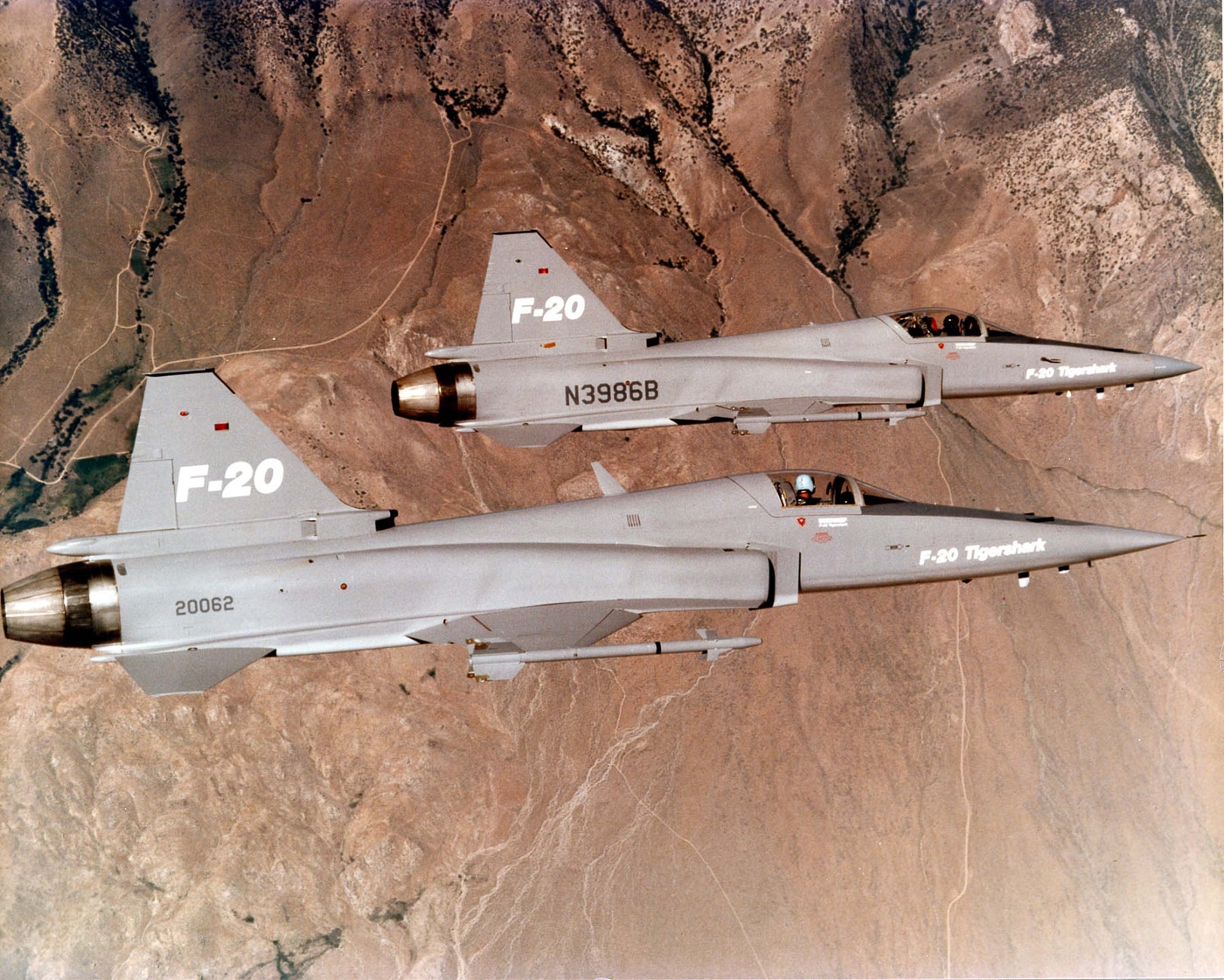
The development of the F-20 was conducted during the FX Program, initiated under the Carter administration. The program was developed to produce fighters for sale to foreign countries that could compete with frontline Soviet fighters without the same sensitive technology installed on U.S. fighters, thereby preventing top-secret technology from falling into enemy hands.
Going Head-to-Head with the F-16/79
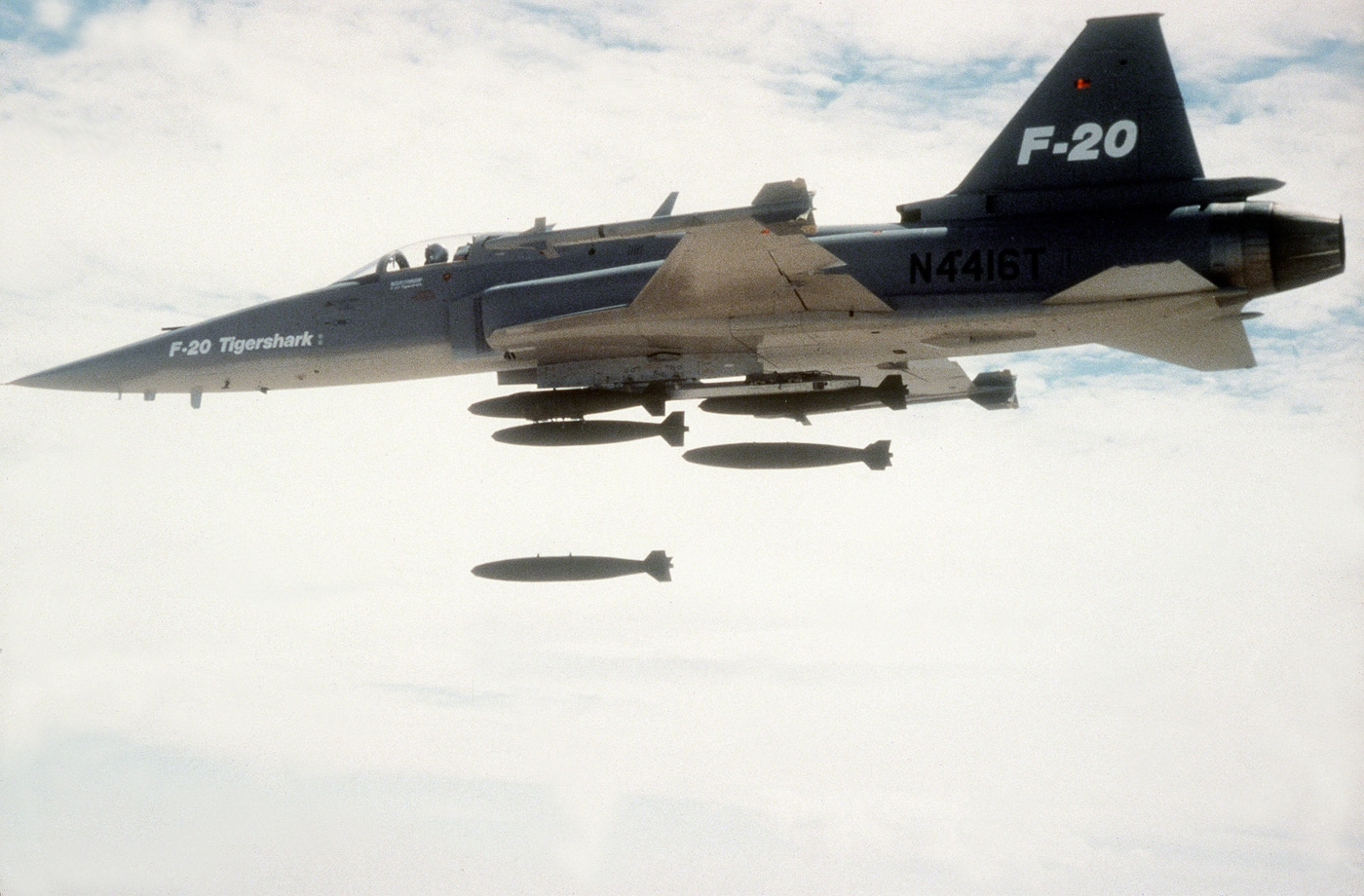
The Tigershark’s primary competition was the F-16/79. It was a base model F-16 equipped with the outdated General Electric J-79 engine, which powered the F-4 Phantom II, instead of the better-performing Pratt & Whitney F100-PW-200/220E afterburning turbofan. It was also equipped with downgraded avionics.
Lower Cost, Higher Value?
While the F-20 was more expensive than the F-5E, it was still lower than the leading designs of the time. In 1983, the F-20 was estimated to have a flyaway cost of $10.7 million per unit. The F-16/79 was priced at $11 million per unit, while the McDonnell Douglas F-15 air superiority fighter was priced at $30 million per unit.
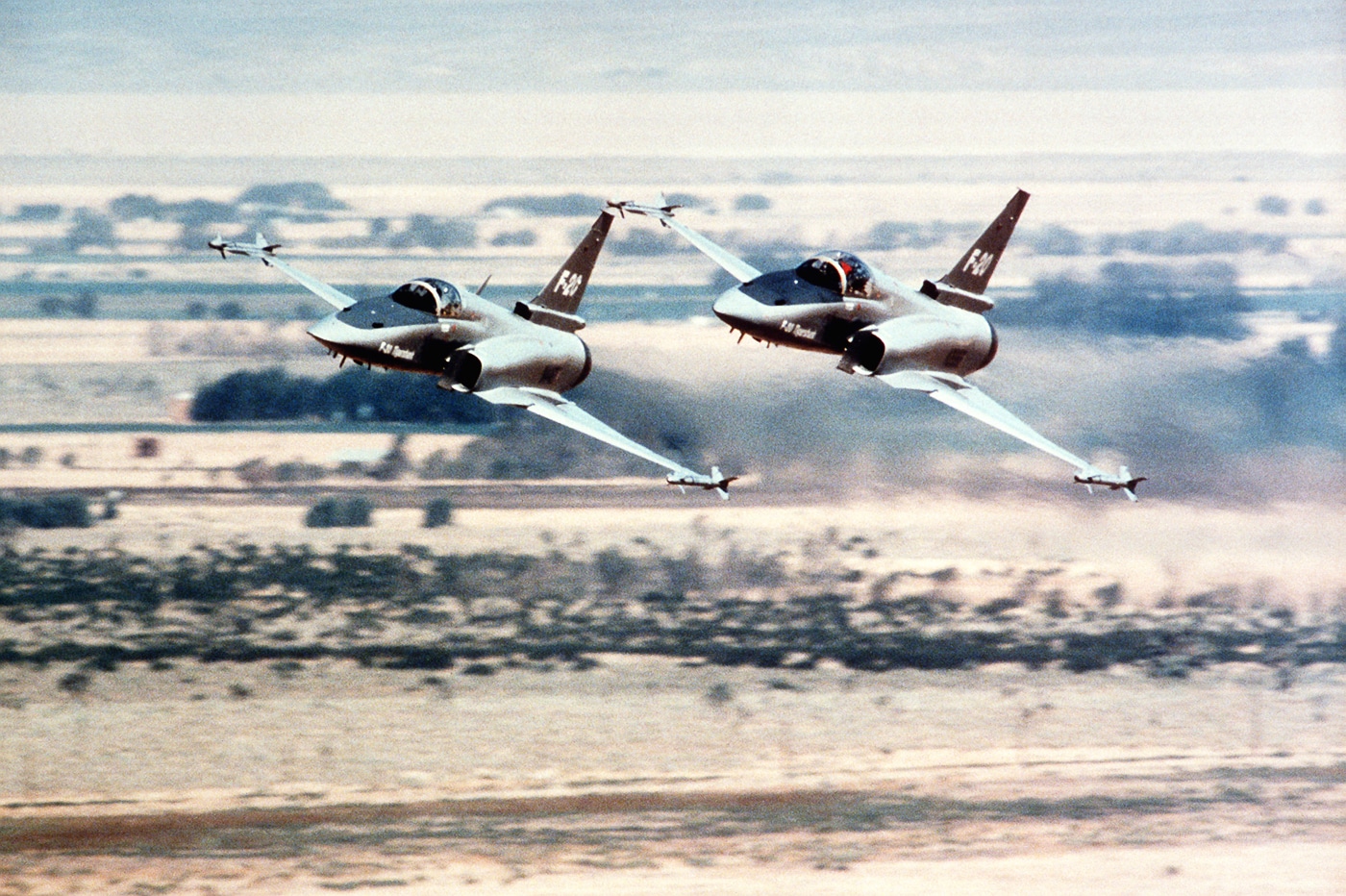
Although the F-20 and F-16/79 were close in price, the F-20 could carry the AIM-7 “beyond visual range” radar-guided missile, which the F-16 lacked until February 1989.
The F-20 also outperformed its competitors in terms of operating costs, as it consumed less fuel, required less maintenance, and boasted better reliability.
Shifting Perspective
Retired U.S.A.F. General Chuck Yeager, the man who had 11.5 kills total and made “Ace in a Day” with five kills during World War II, and who broke the sound barrier, was hired by Northrop to be a public spokesman for the Tigershark at the age of 61.
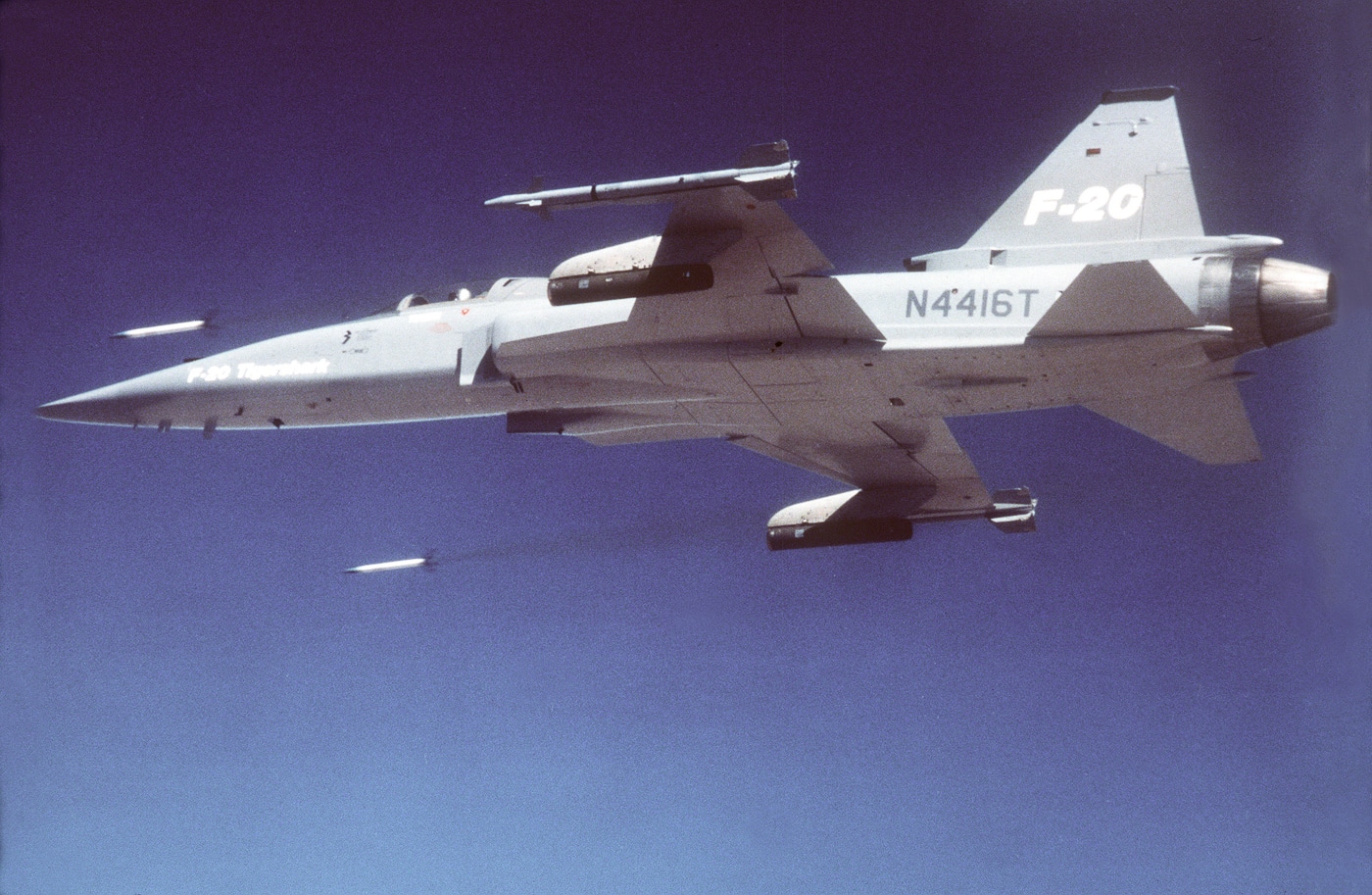
The F-20 was an excellent performer. It featured a combat thrust-to-weight ratio of 1:1.2, a rate of climb of 40,000 feet in 2.3 minutes, and was ready for combat within one minute of start.
However, two major setbacks occurred in the program when, in October 1984, Northrop Pilot Darrell Cornell was killed during a demonstration flight in South Korea, and in May 1985, when Northrop Pilot Dave Barnes was killed at Goose Bay, Labrador, Canada, while practicing for an air show.
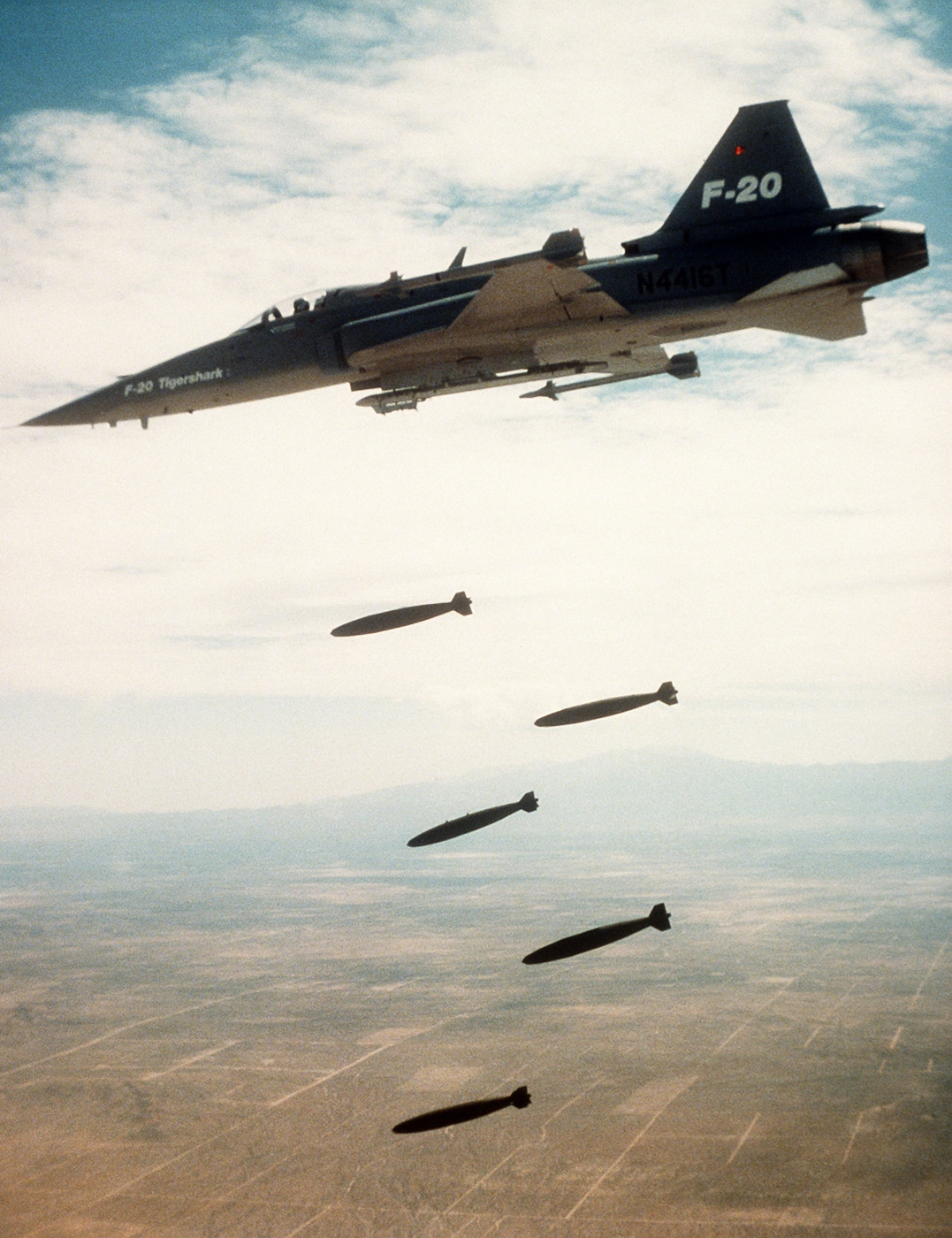
Both crash investigations cleared the aircraft of any design or mechanical failures and determined that G-LOC caused both incidents, as the Tigershark was capable of +9 G performance.
Soviets Invade Afghanistan
On December 25, 1981, Soviet forces invaded Afghanistan, and this was a game-changer for the FX program. In response to the Soviet Invasion, President Reagan allowed Pakistan to purchase 40 F-16A Fighting Falcons, accompanied by an economic package.
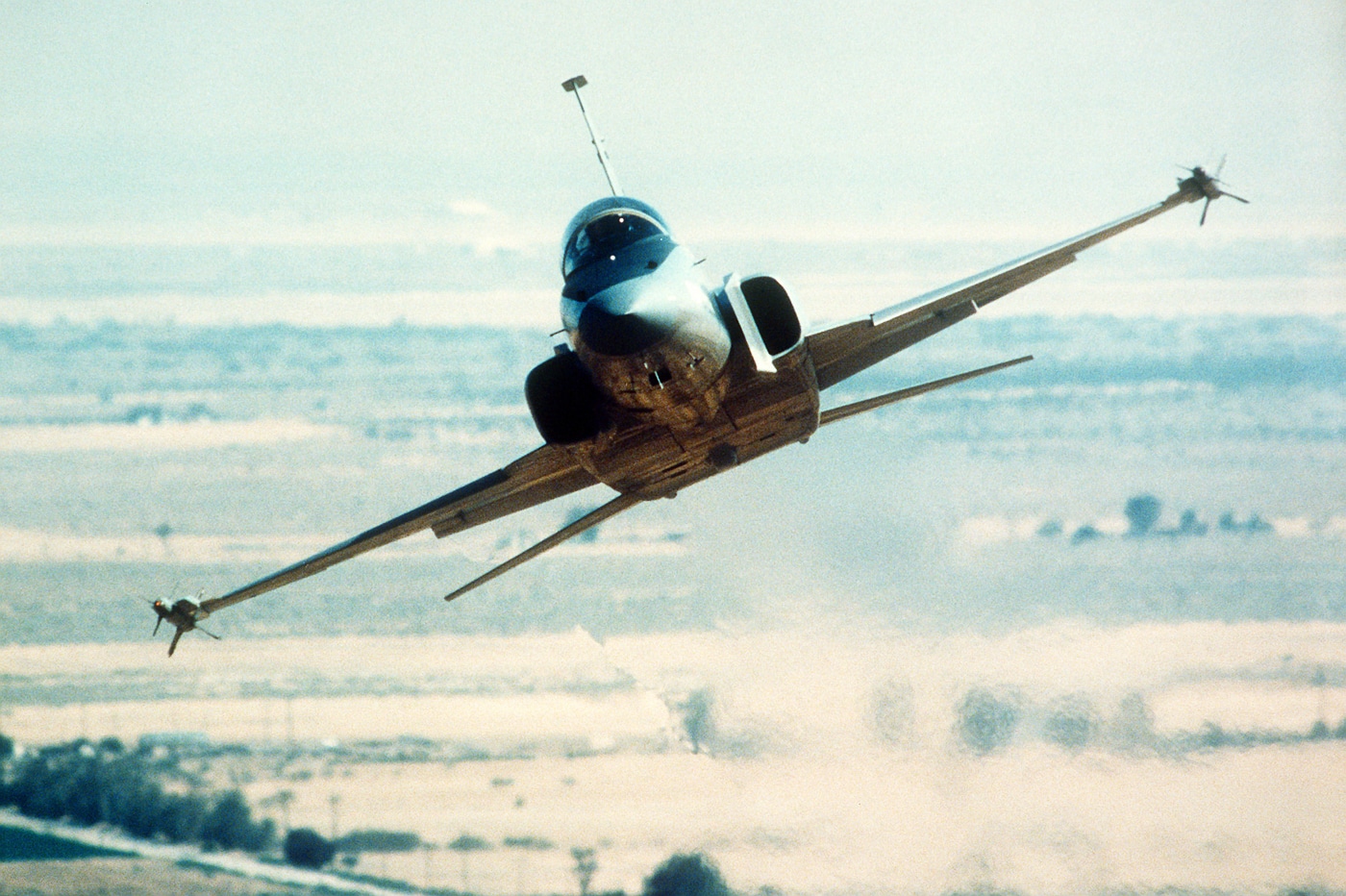
Reagan allowed the sale as part of a containment policy, providing frontline equipment to allies to keep the Soviet Union in check. Seeing this, other nations also wanted the F-16A, rather than the base model, F-16/79.
In May 1982, another waiver was granted to Venezuela, which purchased 24 F-16A and B models to replace its Mirage fighters. In September 1983, Turkey was allowed to buy 160 F-16C & D models to replace its F-5A/B and F-104 Starfighters. Greece, closely following its rival Turkey, purchased 40 C&D models.
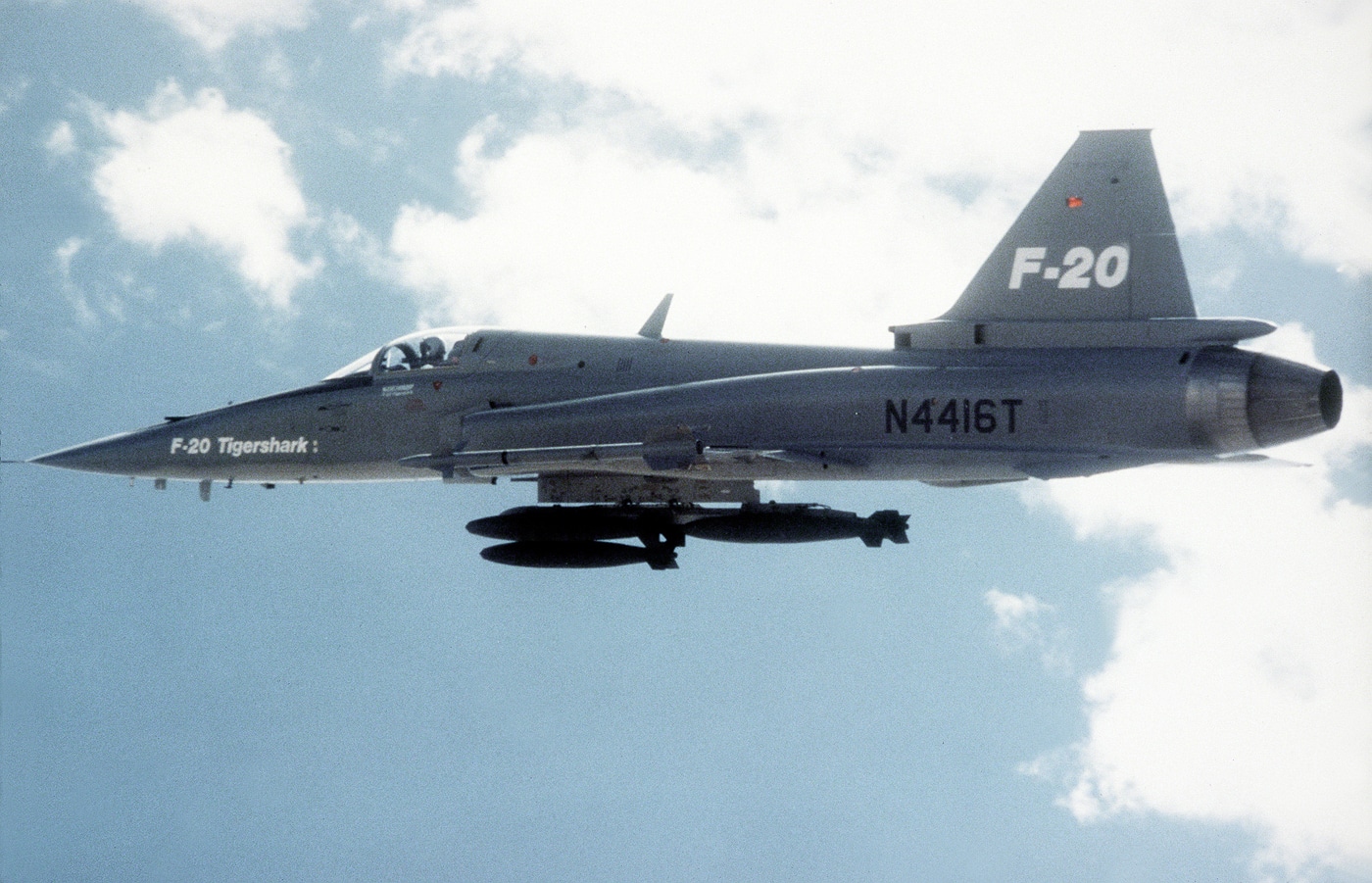
With the sales to Pakistan and others, Northrop felt that the F-5G was still perceived as a low-budget baseline fighter, and changes were needed to address this perception.
The first step was the F-20 designation. Northrop skipped the F-19 because it sounded too Soviet, given their odd-number designations. The U.S. Air Force approved the change in 1982, and the Tigershark name was introduced in March 1983.
Design Improvements
The most significant design change of the new F-20 was the use of the General Electric F404-GE-100 engine. Initially designed for use in the F-18 Hornet, this modification gave the F-20 a significant increase in thrust and a speed exceeding Mach 2.0.
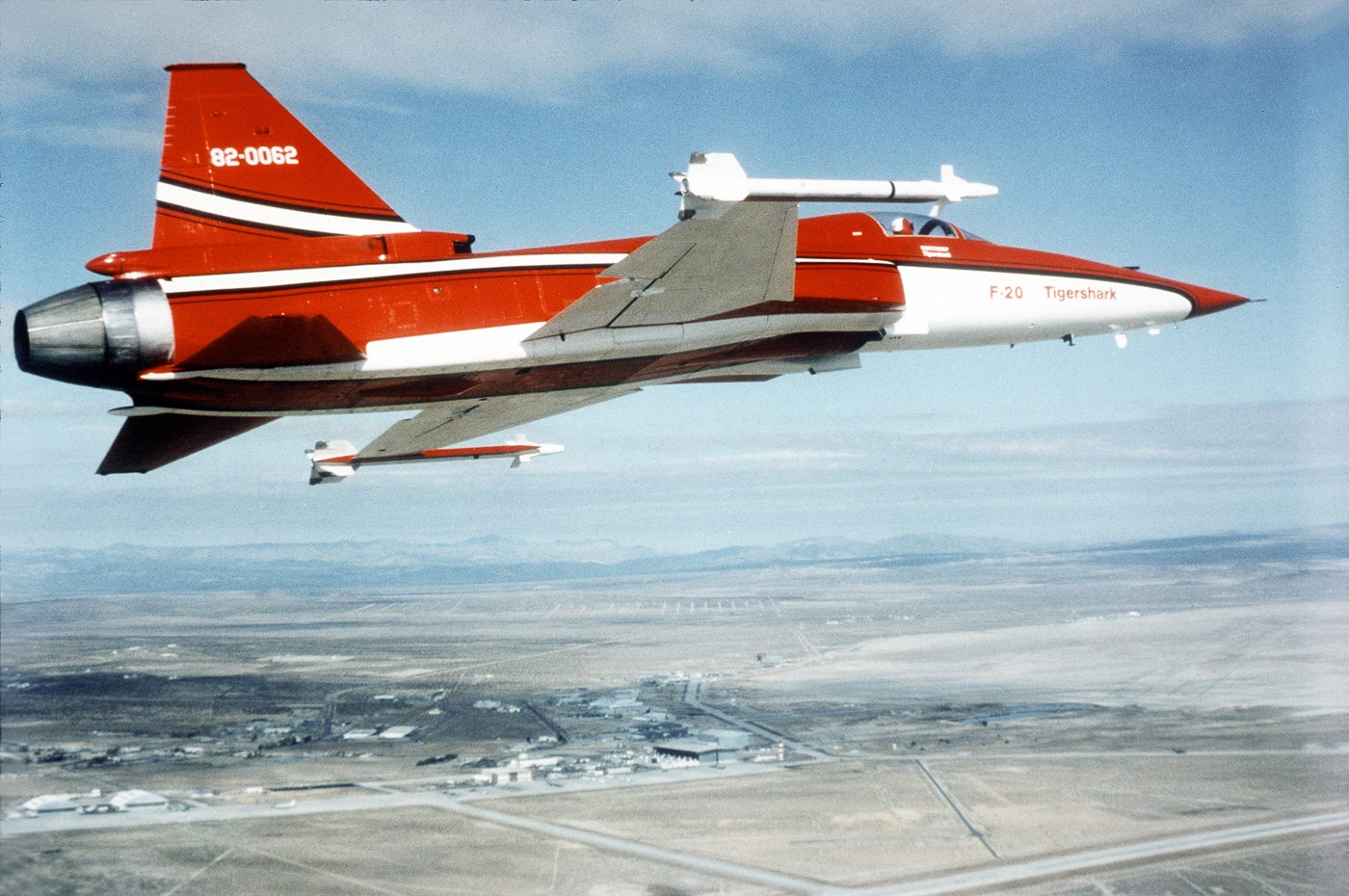
The wings were equipped with modified leading-edge extensions, the horizontal stabilizer was enlarged by 30%, a new fly-by-wire control system was introduced, and numerous upgrades were made to various parts, some of which were manufactured from fiberglass and others from composite materials.
The avionics suite was significantly improved with a more advanced radar, a new navigation system utilizing a ring laser gyroscope instead of the previous electro-mechanical version, a heads-up display (HUD), two multi-function displays located on the left and right, and a hands-on throttle and stick (HOTAS) control system.
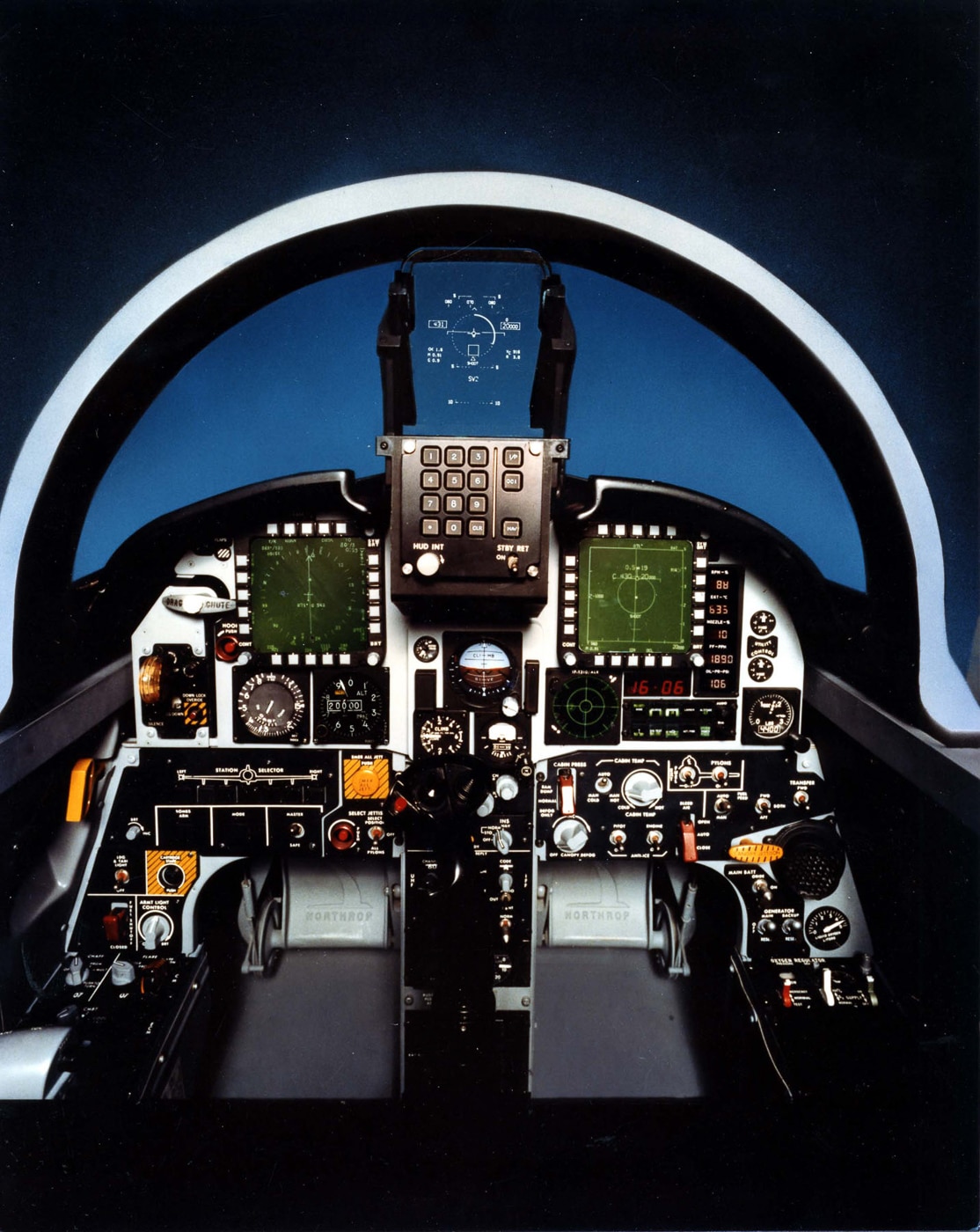
In late 1983, the U.S. government decided to fund Israel’s development of its own fighter, the IAI “Lavi”. Northrop objected, stating that the U.S. government was subsidizing a foreign government competitor, while Northrop had spent upwards of $750 million on the F-20.
Air National Guard and Aggressor
There were talks of using the F-20 specifically for Air National Guard Interceptor use. The F-20 had a faster scramble time than the F-16 and was fitted with the AIM-7 Sparrow missile, which would fit perfectly with the Air Guard Mission. The U.S.A.F. opted for the F-16, citing the commonality with existing units as a more cost-effective long-term solution.
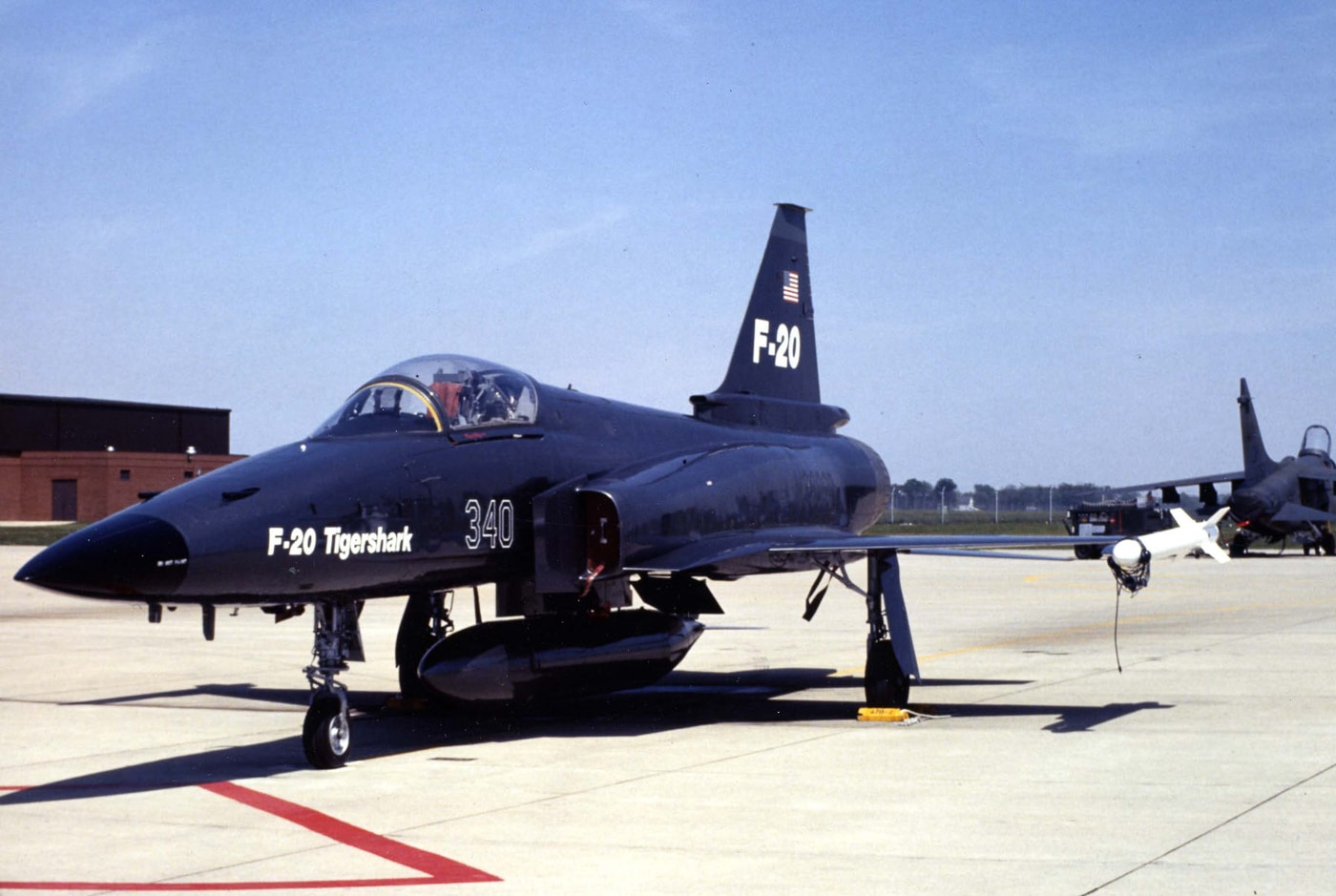
The U.S. Navy was seeking an aircraft for use as an aggressor, but ultimately decided on the F-16. Rumors abounded that General Dynamics sold the F-16 to the Navy at a loss to keep the F-20 out of the market.
Death of the Tigershark
The policy shift after the Soviet Invasion of Afghanistan effectively killed the “poor man’s fighter jet” by creating winners and losers.
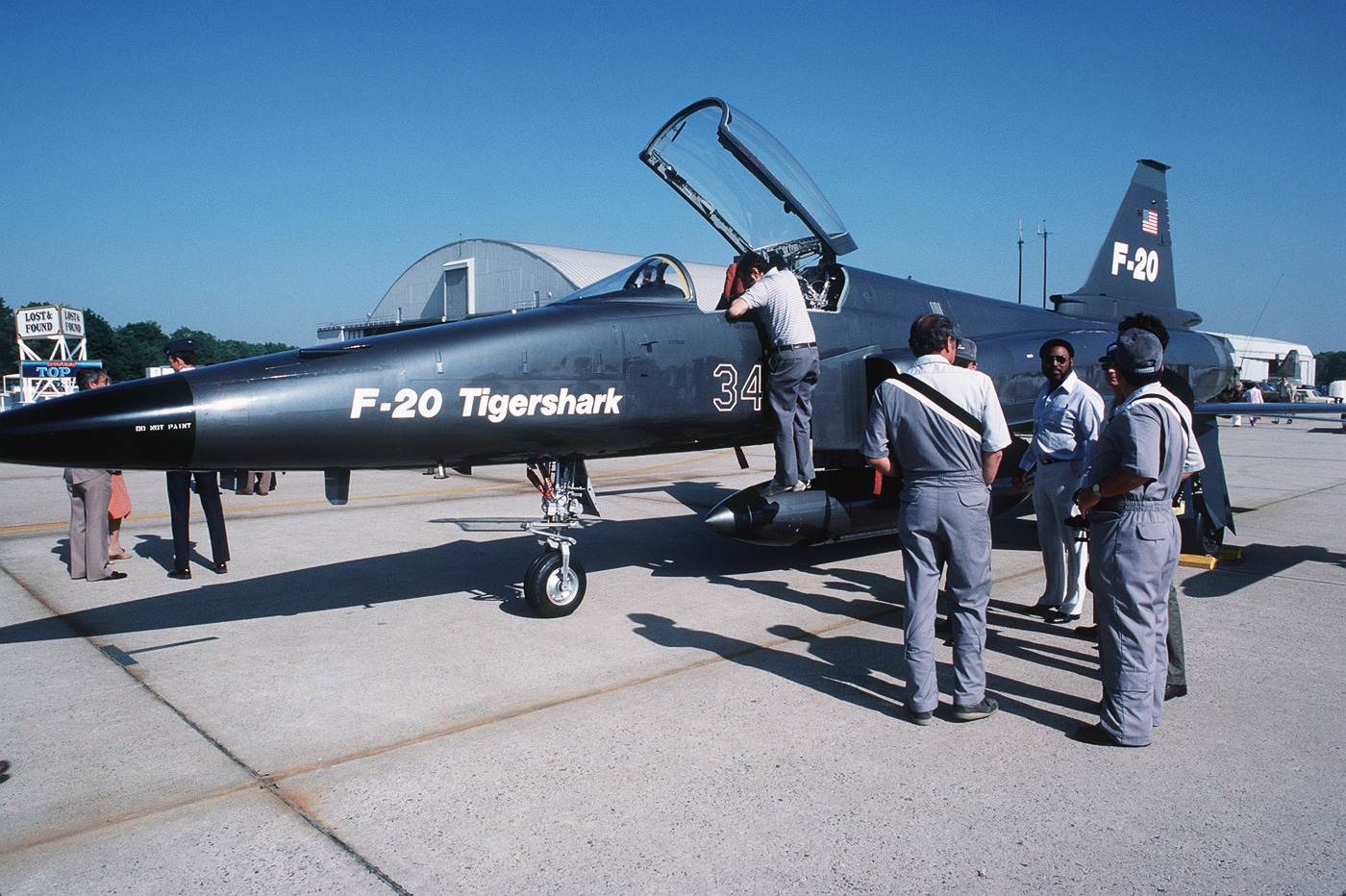
While there were sales talks with several countries, the fact that the U.S.A.F. did not select the F-20 was the primary factor in their decision to purchase the F-16. The FX program effectively erased the market for the Tigershark.
Allegations of backroom deals to prevent the F-20 from being sold were numerous, and a bribery scandal involving Northrop Executives put further negative weight on the program. Ultimately, Northrop kept quiet and did not want to allege charges of shady deals or favoritism, as this would have jeopardized its B-2 Spirit Stealth Bomber program. The result was a highly capable fighter that never founds its place.
Editor’s Note: Please be sure to check out The Armory Life Forum, where you can comment about our daily articles, as well as just talk guns and gear. Click the “Go To Forum Thread” link below to jump in and discuss this article and much more!
Join the Discussion
Read the full article here








![Top 5 Precision Hunting Rifles That Are Actually Worth Your Money [2025] Top 5 Precision Hunting Rifles That Are Actually Worth Your Money [2025]](https://truthrepublican.com/wp-content/uploads/2025/12/1764928146_maxresdefault-450x253.jpg)

